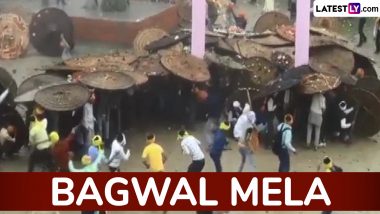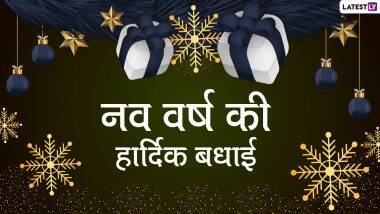Bagwal Mela, also known as the Bagwal Fair, Pathar Maar or Asadi Kautik, is a unique and culturally significant festival celebrated in the Devidhura region, a quaint village in the Champawat district of Uttarakhand. This festival is renowned for its traditional stone-throwing ritual, which sets it apart from other fairs in the country. This festival attracts locals and visitors alike across the nation. The fair generally takes place during Raksha Bandhan, in the month of Shravan. In this article, we’ll provide you with details of Bagwal Mela's history, significance and celebration.
Bagwal Mela History
According to local folklore, there was once a tradition among the Kham people of sacrificing a man (known as Narbali) each year to honour the goddess Varahi. The Kham people consist of four clans: Garhwal, Chamyal, Langaria, and Balig. When the time came for the sacrifice, an elderly woman who had only a grandson was reluctantly chosen to offer him. However, goddess Varahi allowed her to save her grandson if she could provide the same amount of blood as an average man. Since then, the Kham people have commemorated this sacrificial tradition by offering blood through a symbolic ritual of stone pelting. During the ceremony, each of the four Kham clans participates with their own group, using wooden shields known as Farra to protect themselves.
Bagwal Mela Significance
Bagwal Mela holds profound significance for the local population. It is not merely a festival but a cultural expression of the region's traditions and collective identity. The primary ritual of the fair involves a dramatic stone-throwing contest among four Khams and seven Thoks, symbolising a form of spiritual warfare. This act is rooted in the belief that the deities will shield the participants from harm during the ritual, reflecting the community’s faith in divine intervention and protection.
The fair also serves as a platform for the local community to come together, celebrate their heritage, and reinforce social bonds. It showcases traditional music, dance, and folk performances, highlighting the rich cultural tapestry of Uttarakhand. Moreover, Bagwal Mela allows visitors to experience and appreciate the unique customs and practices of the region.
Bagwal Mela Celebration
Bagwal is traditionally played in the courtyard of the Varahi Devi Temple in Kholikhan. It involves young and old participants from all four Khams. The warriors from the Langaria and Balig Khams face off against those from the Garhwal and Chamyal Khams. On the morning of Raksha Bandhan, the participants, dressed in traditional attire, gather at the temple.
The game begins with a ritual worship of the Goddess at the Barahi Temple. While one side of the temple is dedicated to the Goddess, the other side witnesses the Bagwal game. The warriors from both sides throw stones at each other with great intensity and in large numbers until blood is drawn from one participant. The game continues until the priest gives the signal to stop. At the end of the game, players embrace each other, and those with injuries receive first aid.
Uttarakhand’s CM Pushkar Singh Dhami Participated in Bagwal Mela
LIVE: चम्पावत में माँ वाराही मन्दिर देवीधुरा में आयोजित बग्वाल मेले में प्रतिभाग https://t.co/ZaHjUrEYVo
— Pushkar Singh Dhami (@pushkardhami) August 19, 2024
Bagwal Mela is a remarkable festival that encapsulates the essence of Uttarakhand's cultural heritage. Its unique stone-throwing ritual and traditional celebrations make it a fascinating event that draws attention from far and wide. For those interested in experiencing the vibrant traditions of Uttarakhand, Bagwal Mela offers a rare and immersive glimpse into the region's rich cultural tapestry.
(The above story first appeared on LatestLY on Aug 20, 2024 12:40 PM IST. For more news and updates on politics, world, sports, entertainment and lifestyle, log on to our website latestly.com).













 Quickly
Quickly





















